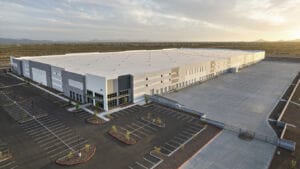A recent report released by Cushman & Wakefield Thursday revealed tenant demand for U.S. office space slowed in the first half of the year as businesses recalibrate and react to global economic uncertainty.
Despite the deceleration, vacancy remained steady and rents jumped to the strongest growth rate in seven years.
The U.S. office sector absorbed 14.7 million square feet of space in the second quarter of 2016, up 24.9 percent from the levels observed in the prior quarter but down 36 percent from a year-ago.
In the first half of 2016, net absorption was off by 34 percent from the strong levels registered in the first half of 2015. Despite the deceleration, tenant demand for office space kept pace with new construction. In the second quarter, the national office vacancy rate was unchanged from the prior quarter at 13.4 percent. The vacancy rate was down 50 basis points (bps) from a year ago and down 400 bps from the peak reached in mid-2010.
Kevin Thorpe, Cushman & Wakefield’s Chief Economist, says the slowdown in the office sector is a function of growing economic uncertainty along with slowing U.S. job creation.
“U.S. businesses have had many curveballs thrown at them this year – concerns over the health of China’s economy, equity market volatility, weak U.S. GDP growth, now Brexit – many reasons to at least tap the breaks on expansion plans,” Thorpe said. “Moreover, at this maturing stage in the cycle, it is not uncommon to see job growth and absorption levels decelerate as the economy nears full employment. But overall, the office leasing fundamentals are holding up extremely well, and the secondary markets are really starting to hit their stride.”
U.S. office rents increased 5.8 percent in the second quarter compared to a year-ago to $29.00. Since reaching a mid-2011 low point, average asking rents in the U.S. have increased by 18.0 percent. Of the 87 markets tracked by Cushman & Wakefield, asking rents increased in 67 markets, declined in 19 markets and were unchanged in one market. The office construction pipeline continued to expand modestly.
Approximately 13 million square feet of office space was added to the national inventory as a result of construction completions. Houston, Midtown Manhattan and Santa Clara each saw more than 1.0 million square feet of new office space enter the market. The amount of construction deliveries roughly matched total net absorption.
“Outside of a handful of markets, the construction cycle continues to lag job creation,” said Kenneth McCarthy, Cushman & Wakefield principal economist and applied research lead. “The upshot is that, nationally, the threat of overbuilding at this stage in the cycle is minimal. The downside is that many markets badly need the new space to relieve some of the pressure on rents.” The markets with the highest share of inventory under construction include Nashville (9.4 percent), Seattle (9.4 percent) Brooklyn (9.4 percent), Salt Lake City (6.4 percent) and San Francisco (6.2 percent).
Regional Highlights:
Absorption
Midtown Manhattan saw the largest amount of space absorbed at 2.3 million square feet, followed by Chicago at 1.3 million square feet and Phoenix and Philadelphia, both at 1.0 million square feet. The remainder of the top 10 included Dallas/Fort Worth, 860,600 square feet; Detroit, 675,000 square feet; Austin, 653,800 square feet; Central New Jersey, 582,000 square feet; Miami, 538,000 square feet; and The Los Angeles Metro area, 514,300 square feet. On the downside, the largest amount of negative absorption (space going back to the market) was in Santa Clara/Silicon Valley where negative 1.3 million square feet came back to the market, much of it in the form of sublease space. In all, of the 87 markets tracked by Cushman & Wakefield, 65 experienced positive absorption.
Vacancy
Vacancy fell slightly from the first quarter in the Northeast and Midwest, increased slightly in the South and remained unchanged in the West region. Overall, vacancy rates fell in 54 markets and rose in 31. Markets with the largest vacancy rate declines from the first quarter to the second included Jacksonville with a 210 basis points (bps) decline; Inland Empire with a 180 bps decrease; and Long Island and Indianapolis, both dropping by 140 bps. In the second quarter, Nashville overtook San Francisco for having the lowest vacancy rate in the country at 5.8 percent.
Rents
The strongest rent growth occurred in Silicon Valley, where asking rents rose 28.4 percent from year-earlier levels. Other significant rent growth occurred in San Mateo (17.9 percent), Seattle (16.3 percent), Dallas/Fort Worth (14.3 percent), Puget Sound/Eastside (12.2 percent), San Francisco (9.3 percent), East Bay San Francisco (9.2 percent) and Miami (8.4 percent).



